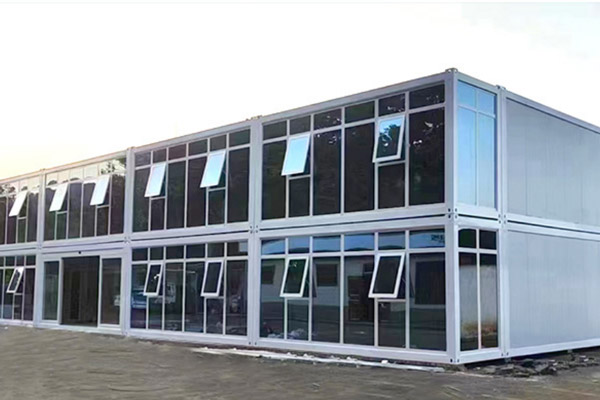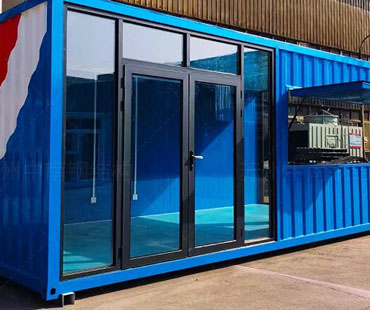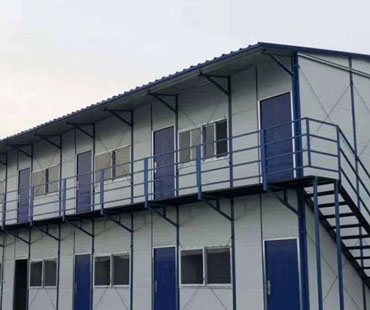In today’s global economy, efficient logistics management is crucial for the success of businesses that rely on the transportation of goods. One of the most vital components of this logistics chain is container shipping. The journey of a shipping container—from the port to the warehouse—requires meticulous planning, coordination, and execution. This article explores the key elements of efficiently managing the container logistics chain, focusing on the processes involved, challenges faced, and best practices for optimization.
The container logistics chain encompasses several key phases, including:
1.Port Operations: The process begins at the port, where containers arrive on cargo ships. Efficient port operations are critical for minimizing turnaround time and ensuring that containers are quickly unloaded and made available for transport.
2.Transportation: After leaving the port, containers are transported to warehouses or distribution centers. This stage involves multiple transportation modes, including trucks, trains, and sometimes barges, depending on the destination and infrastructure availability.
3.Warehousing: Once the containers arrive at the warehouse, they must be unloaded, and the goods inside need to be sorted, stored, or dispatched. Efficient warehousing practices are essential for managing inventory and ensuring timely delivery to customers.
4.Final Delivery: The last mile delivery involves transporting goods from the warehouse to their final destination. This stage often presents its own set of challenges, including traffic congestion and delivery scheduling.
To ensure the efficient management of the container logistics chain, several key elements must be considered:
1.Advanced Technology Integration: The use of technology plays a pivotal role in optimizing the logistics chain. Tools such as Transportation Management Systems (TMS), Warehouse Management Systems (WMS), and real-time tracking solutions enhance visibility and streamline operations. For example, real-time tracking allows logistics managers to monitor the progress of containers throughout their journey, enabling proactive decision-making.
2.Data Analytics: Leveraging data analytics can help businesses identify bottlenecks and inefficiencies in the logistics chain. By analyzing historical data, companies can forecast demand, optimize inventory levels, and enhance route planning for transportation.
3.Collaboration and Communication: Efficient logistics requires seamless collaboration among various stakeholders, including shipping companies, port authorities, freight forwarders, and warehouse operators. Establishing clear communication channels and protocols ensures that everyone involved is aligned and can respond quickly to changing circumstances.
4.Sustainability Practices: As environmental concerns grow, integrating sustainable practices into the logistics chain becomes increasingly important. This includes optimizing transport routes to reduce fuel consumption, utilizing eco-friendly packaging materials, and implementing energy-efficient processes in warehouses.

Despite advancements in technology and management practices, several challenges persist in the container logistics chain:
1.Port Congestion: Major ports often face congestion due to high volumes of incoming and outgoing containers. This can lead to delays, increased costs, and inefficiencies in the supply chain.
2.Regulatory Compliance: Navigating complex regulations and customs procedures can be a significant hurdle. Delays in clearing customs can impact the overall timeline of container logistics, making it essential for businesses to stay informed about regulatory requirements.
3.Infrastructure Limitations: Inadequate infrastructure, such as poor road conditions or insufficient warehousing capacity, can hinder the efficient movement of containers from ports to warehouses.
4.Labor Shortages: The logistics industry often faces labor shortages, particularly in skilled positions such as truck drivers and warehouse operators. This can lead to delays and increased operational costs.
To overcome challenges and optimize the container logistics chain, companies can adopt several best practices:
1.Implementing Just-in-Time (JIT) Inventory: JIT inventory systems help reduce excess stock and improve cash flow by ensuring that goods arrive precisely when needed. This approach minimizes storage costs and enhances overall efficiency.
2.Investing in Automation: Automation technologies, including robotic process automation (RPA) and automated guided vehicles (AGVs), can significantly enhance efficiency in warehouses and port operations, reducing manual labor and increasing throughput.
3.Enhancing Visibility: Providing stakeholders with real-time visibility into the status of containers and shipments can improve decision-making and enhance customer satisfaction. This can be achieved through integrated software systems that allow all parties to access and share information.
4.Regular Training and Development: Continuous training for logistics personnel is essential to keep pace with technological advancements and industry best practices. Investing in workforce development enhances skills and improves overall operational efficiency.
5.Building Strong Relationships: Fostering strong relationships with partners in the logistics chain—such as carriers, suppliers, and logistics service providers—can facilitate smoother operations and better collaboration.
Efficient management of the container logistics chain is crucial for businesses seeking to thrive in a competitive global marketplace. As e-commerce continues to expand and consumer expectations for fast delivery rise, optimizing the logistics process from the port to the warehouse becomes even more critical.
By embracing advanced technologies, leveraging data analytics, fostering collaboration, and implementing sustainable practices, companies can significantly enhance their logistics operations. Despite the challenges posed by port congestion, regulatory compliance, infrastructure limitations, and labor shortages, proactive strategies and best practices can mitigate these issues.


